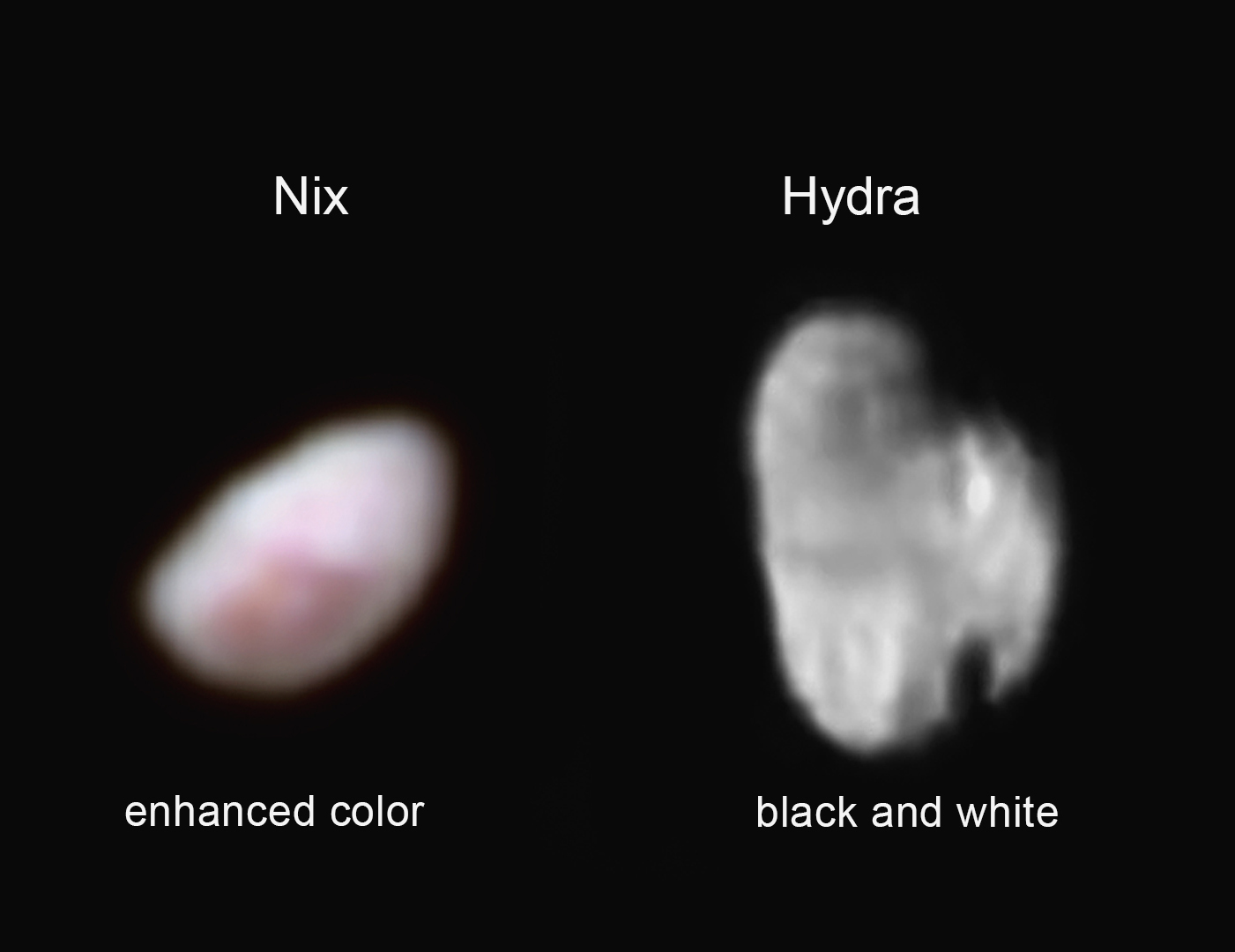A Red Spot On Nix And Hydra's Rubber Ducky Shape Come Into Focus In Newest Images Of Pluto's Moons

Pluto's smaller moons Nix and Hydra are coming into focus and they have interesting stories to tell. Jelly-bean shaped Nix has an intriguing region on its surface that has a distinct red tint that scientist suspect might be the location of a crater. "Additional compositional data has already been taken of Nix, but is not yet downlinked. It will tell us why this region is redder than its surroundings," said mission scientist Carly Howett, Southwest Research Institute, Boulder, Colorado. She added, "This observation is so tantalizing, I’m finding it hard to be patient for more Nix data to be downlinked."
Hydra on the other hand is irregularly shaped - rubber ducky like - with at least two large craters visible, one which is mostly in shadow. From this image, Hydra is estimated to be 55 kilometers (34 miles) long and 40 kilometers (25 miles) wide. "Before last week, Hydra was just a faint point of light, so it's a surreal experience to see it become an actual place, as we see its shape and spot recognizable features on its surface for the first time", said mission science collaborator Ted Stryk of Roane State Community College in Tennessee.
For the original press release, click here.







